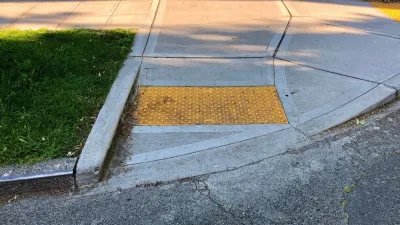My Toyota Prius just turned 100,000. That’s quite a milestone for a car and it may be a harbinger of things to come. Many planners are betting so-called “peak oil” will undermine our car culture because we won’t have the fuel to feed them. The history of my Prius suggests otherwise.
My Toyota Prius just turned 100,000. That's quite a milestone for a car and it may be a harbinger of things to come. Many planners are betting so-called "peak oil" will undermine our car culture because we won't have the fuel to feed them. The history of my Prius suggests otherwise.
When my Prius was "born" in 2001, hybrids were an oddity. Toyota sold fewer than 15,000 of the cars in the U.S., despite the fact the technology had already been proven in Japan. It even subsidized the retail price of the car, using it as a loss leader to build a new market.
In 2003, my Prius had been sitting on the lot for six months, unwanted, until the salesman gave me a deal to roll it home. It's diminutive size reminded us of the family car Fred Flintstone "drove" using his feet to power it along. So we named it "Fred".
Despite these humble beginnings, Fred has been great. In fact, he's still running on his original rear brake pads. We had the front pads replaced on its 100,000 birthday. We change the oil every 5,000 miles, and it hums along, often silently, reliably getting 48 mpg.
Now, driving in 2007, my decision to buy Fred looks brilliant. Gas prices bumped up to $2 per gallon by the end of 2004. By the summer of 2005, prices had eclipsed $3 per gallon in many parts of the nation, particularly on the coasts. Refinery bottlenecks, reformulated gas mandates, Nigeria, uncertainty created by pesky South American socialists, and a protracted military presence in the Middle East conspired to keep prices relatively high.
Hybrid sales jumped along with gas prices. Hybrid sales are on track to sell 345,000 by the end of the year according to JD Power & Associates. Toyota continues to be the leader, wracking up more than half of all hybrid sales. But this is the tip of the iceberg. JD Power speculates that 65 hybrid models will swarm onto the market by 2010. Toyota alone has a corporate strategy targeting 600,000 sales in the U.S. early in the next decade. The next generation will advertise fuel efficiency approaching 70 mpg (or more).
Hybrids are still a small part of the overall car market, but it is a growing segment. And this bodes well for the future of the automobile. The technology is improving, potentially building into all automobiles resilience to environmental regulation and eventually dwindling oil supplies. So, reports of the death of the automobile and automobility are greatly exaggerated. We need to make sure we plan for more mobility, not less.

Alabama: Trump Terminates Settlements for Black Communities Harmed By Raw Sewage
Trump deemed the landmark civil rights agreement “illegal DEI and environmental justice policy.”

Planetizen Federal Action Tracker
A weekly monitor of how Trump’s orders and actions are impacting planners and planning in America.

The 120 Year Old Tiny Home Villages That Sheltered San Francisco’s Earthquake Refugees
More than a century ago, San Francisco mobilized to house thousands of residents displaced by the 1906 earthquake. Could their strategy offer a model for the present?

In Both Crashes and Crime, Public Transportation is Far Safer than Driving
Contrary to popular assumptions, public transportation has far lower crash and crime rates than automobile travel. For safer communities, improve and encourage transit travel.

Report: Zoning Reforms Should Complement Nashville’s Ambitious Transit Plan
Without reform, restrictive zoning codes will limit the impact of the city’s planned transit expansion and could exclude some of the residents who depend on transit the most.

Judge Orders Release of Frozen IRA, IIJA Funding
The decision is a victory for environmental groups who charged that freezing funds for critical infrastructure and disaster response programs caused “real and irreparable harm” to communities.
Urban Design for Planners 1: Software Tools
This six-course series explores essential urban design concepts using open source software and equips planners with the tools they need to participate fully in the urban design process.
Planning for Universal Design
Learn the tools for implementing Universal Design in planning regulations.
Clanton & Associates, Inc.
Jessamine County Fiscal Court
Institute for Housing and Urban Development Studies (IHS)
City of Grandview
Harvard GSD Executive Education
Toledo-Lucas County Plan Commissions
Salt Lake City
NYU Wagner Graduate School of Public Service




























